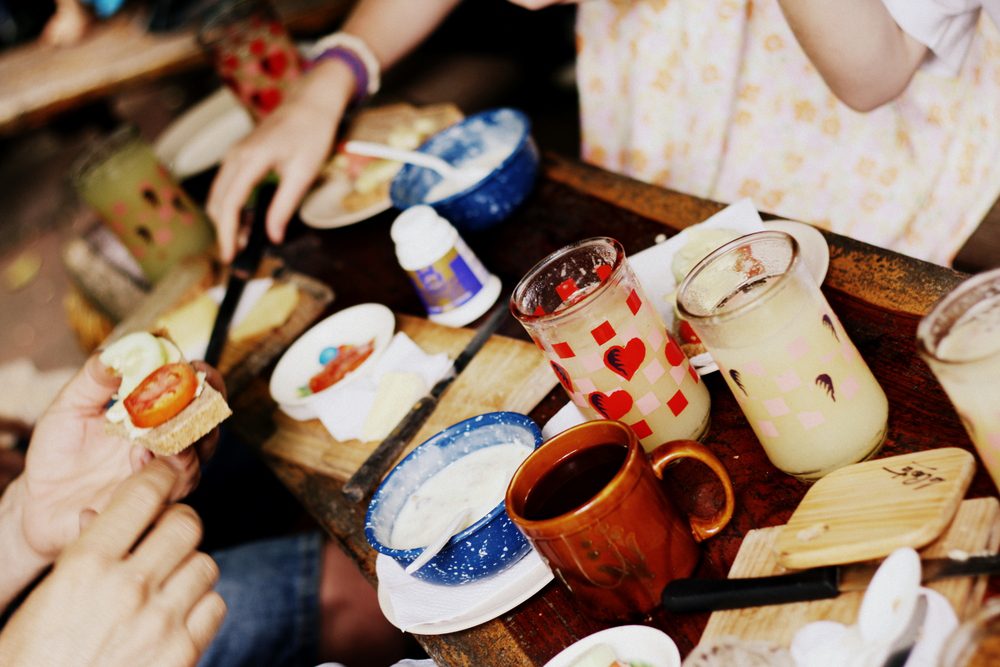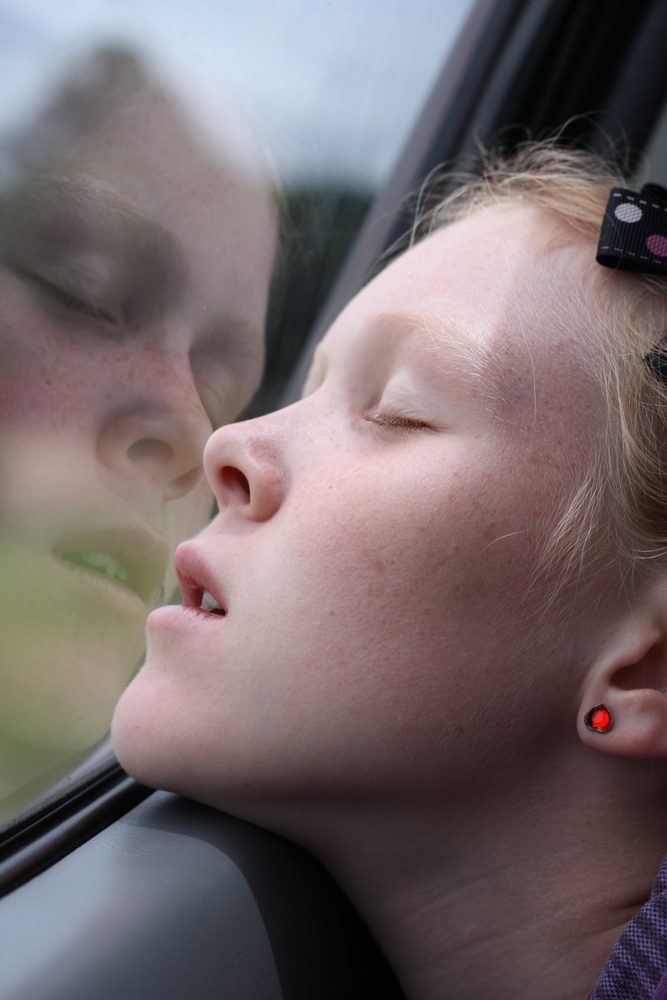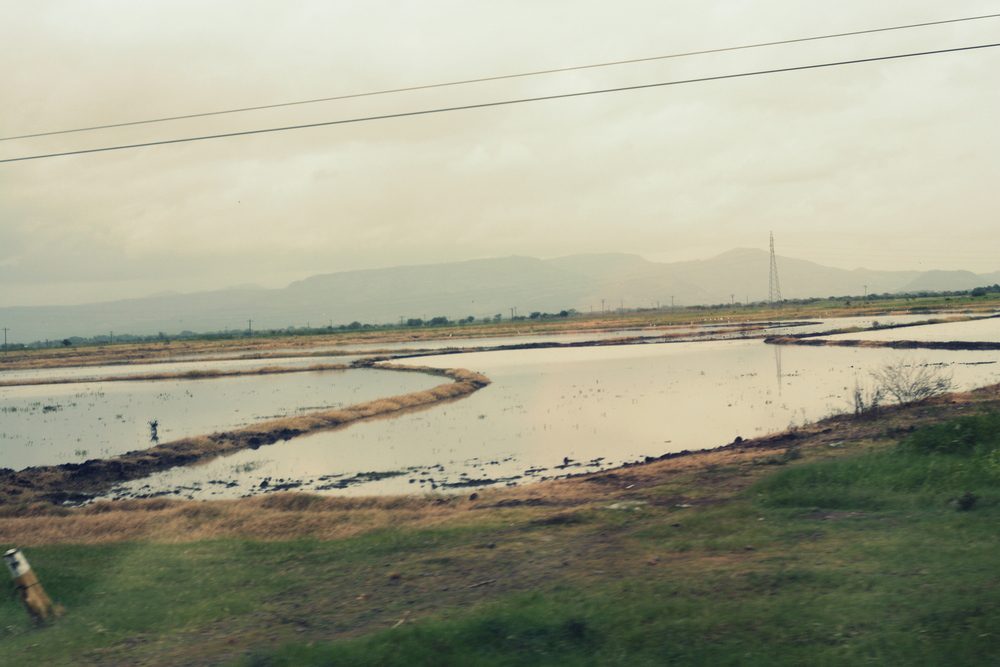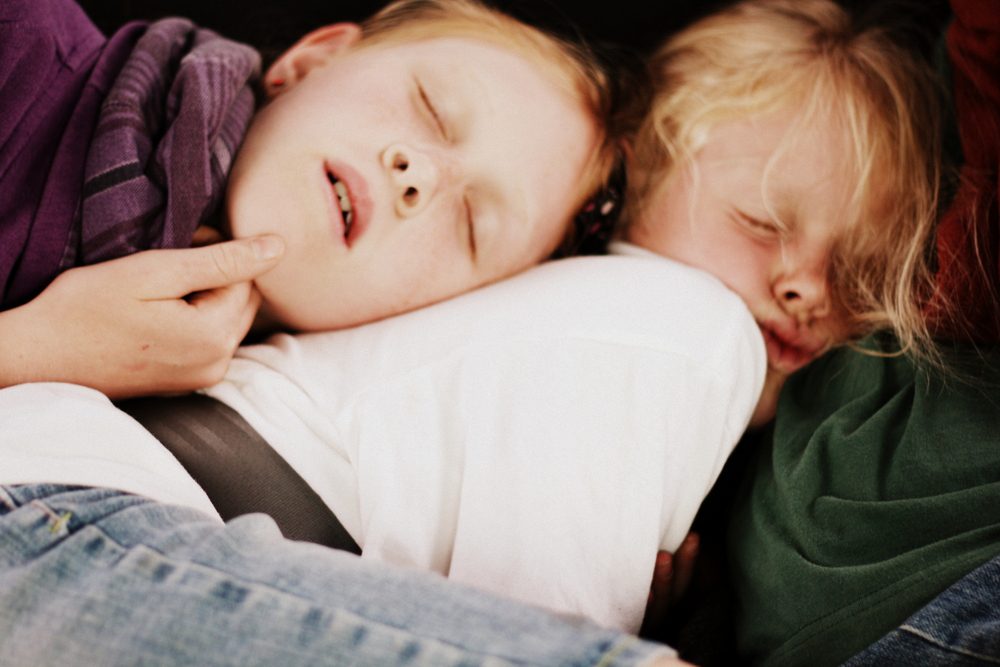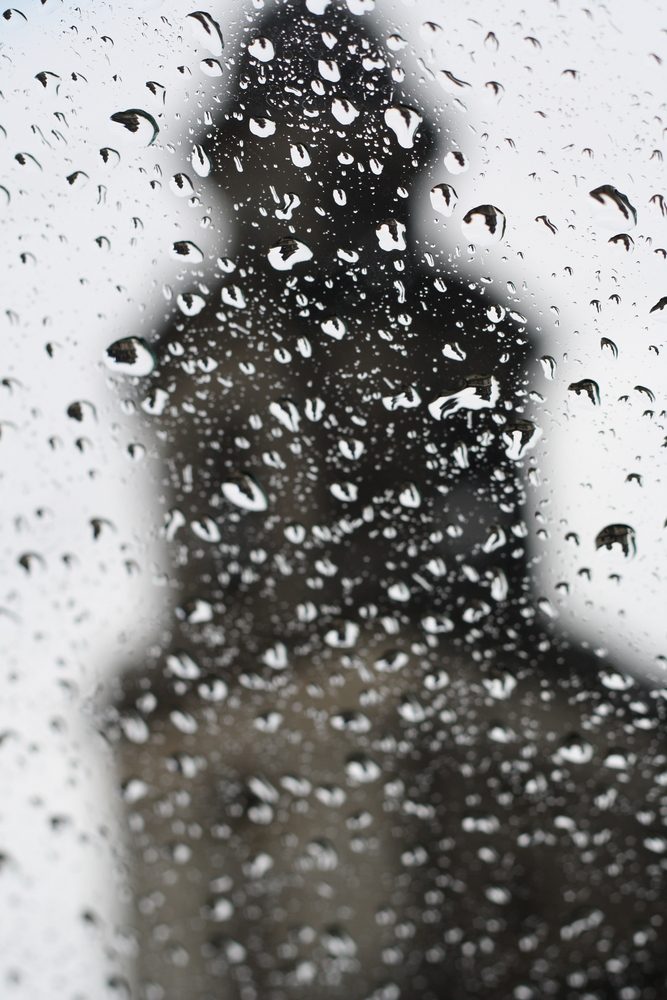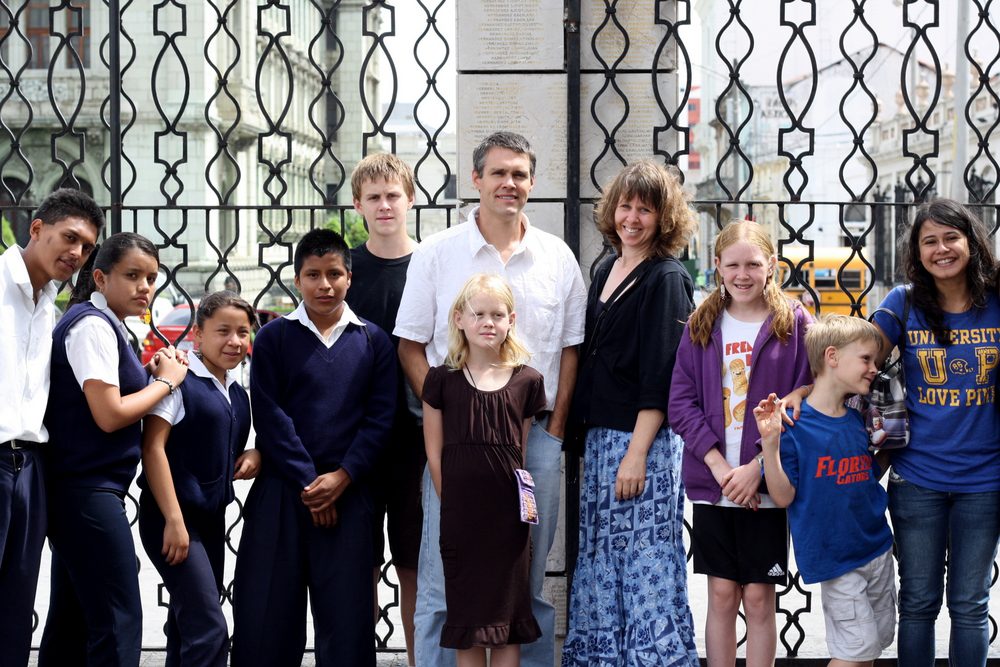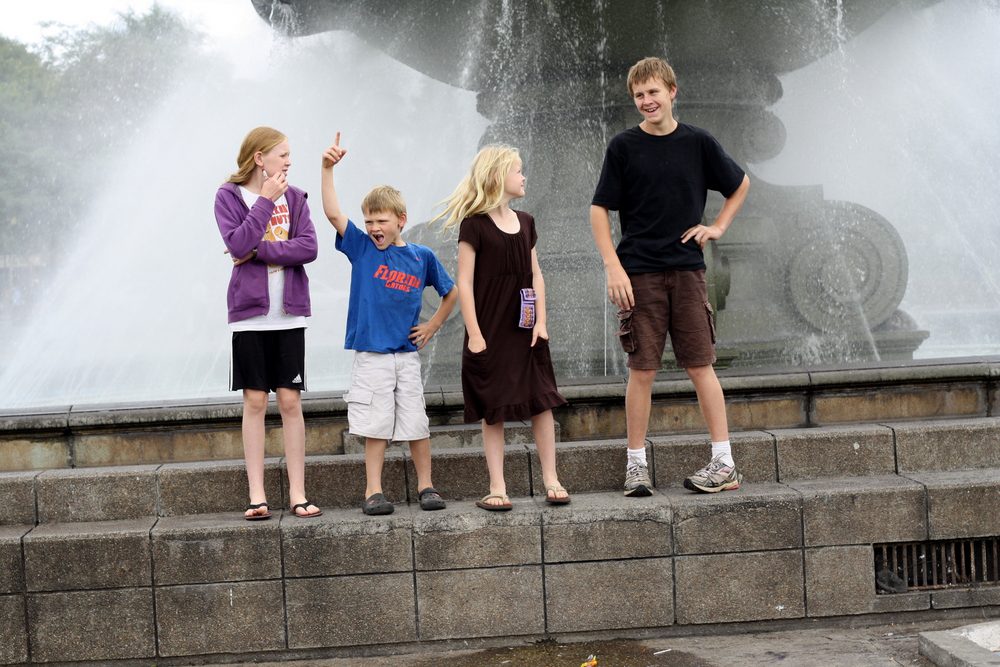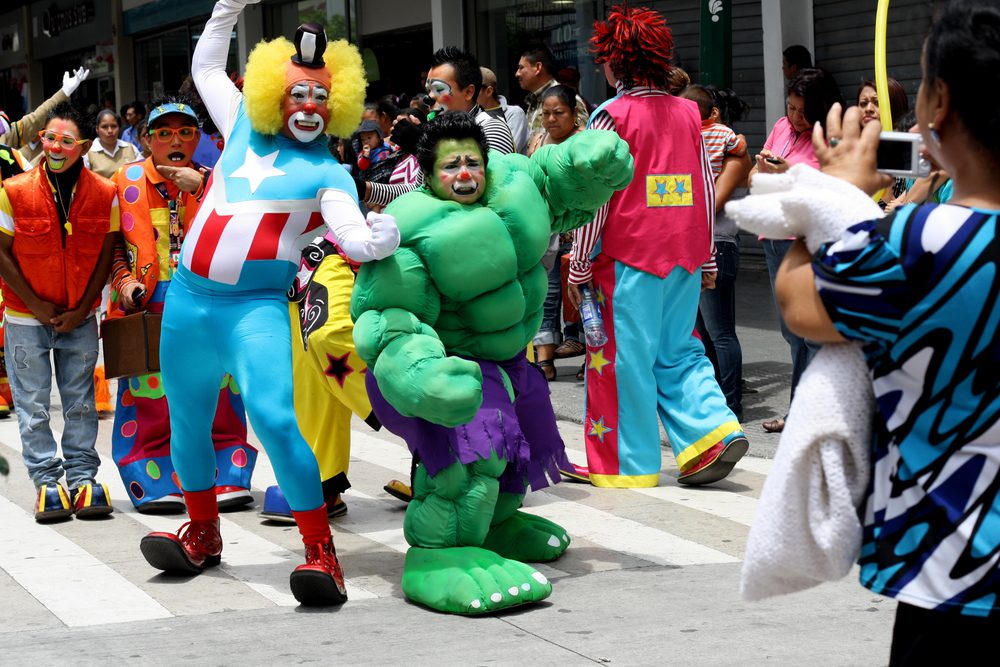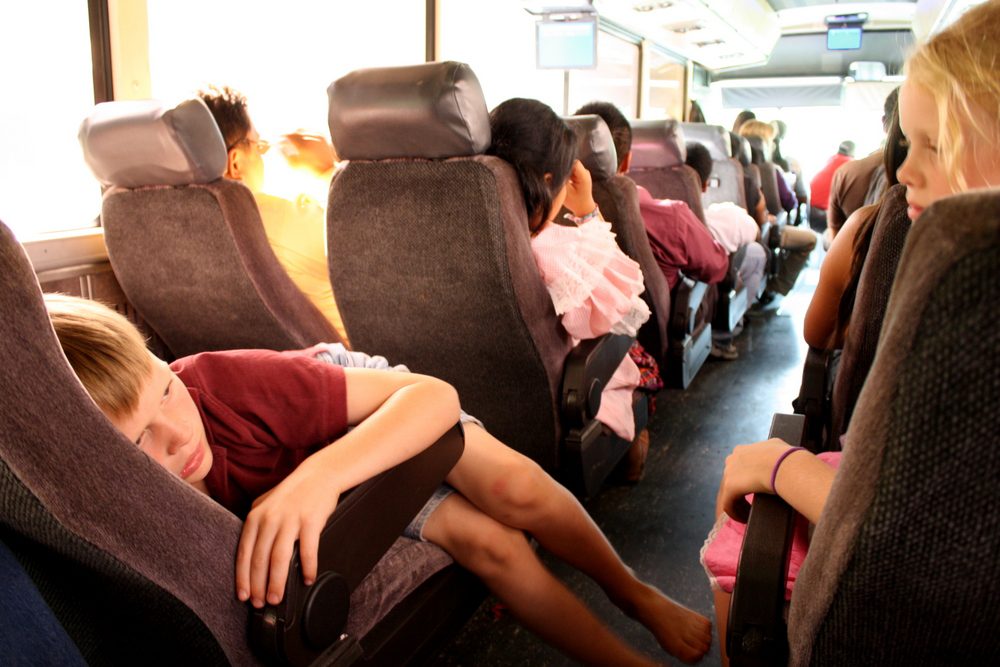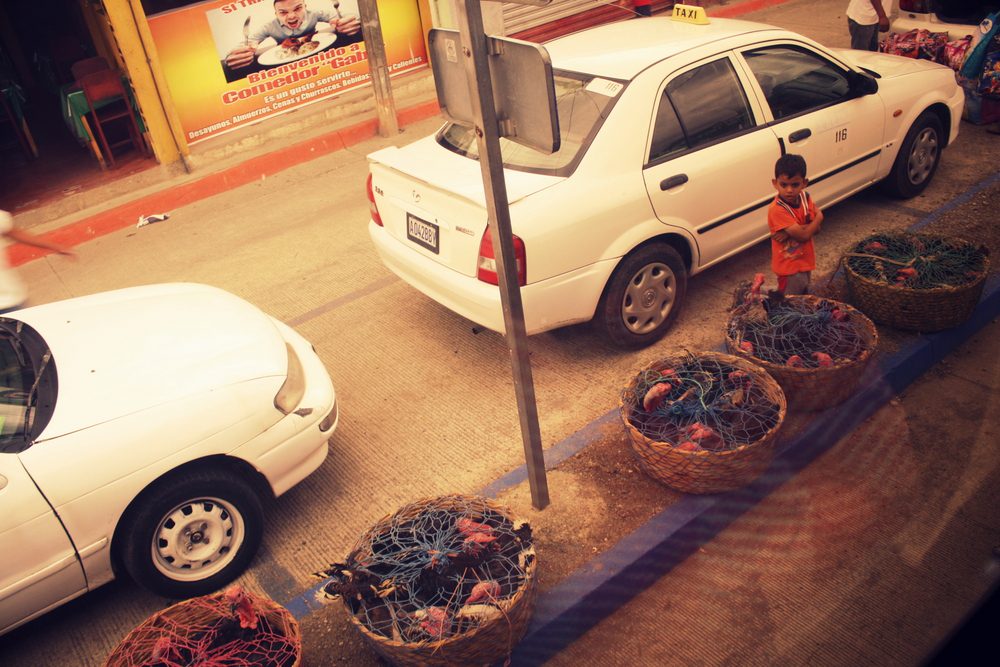Day 12
Elias, the kid who threw rocks at his sister as he chased her down the path by our house and who stole candy and then lied about it, shows my older daughter how to milk the cow. She never quite catches on.
***
My husband takes the truck and a whole bunch of neighbors way back in to the boonies to visit Don Humberto’s coffee farm.
Don Humberto with son Moises’ son.
While they are gone, I take the kids and, starting up at one end of the community, work my way down through, visiting all the neighbors.
At Maribel’s house, her husband lets the kids ride the horse.
Doña Angelina, one of the more educated women in the group, has moved to Spain to work as house help. Her husband tried to kill her, so she fled.
At Marina’s house, she shows me the cross and stone marker on her front porch where, about ten years ago, her husband was murdered.
Don Alejandro and Doña Angélica’s house is now surrounded by their children’s houses. It’s a colony, the neighbors joke. (The community has nearly doubled in size—there are new adobe houses everywhere.)
***
When we lived here, I held weekly meetings for the community children. Some have moved away (I’m sad I don’t get to see Flor Elizabeth, the girl who carried our baby with her everywhere she went), but Ofelia and Meyling are so excited to see me. They recount the scrapbooks we made, the cookies we baked, and the songs we sang. Ofelia now has two children of her own, and Meyling has a cherubic baby girl.
***
Regarding Jeaneth and Gustavo
Jeaneth and Gustavo were the couple closest to our age, and always appreciated their can-do spirit. I am in awe, even more now than before, of their passion, drive, and never-ending energy.
When we left, they had two little boys. Now they have five; the youngest is forty days old, the magic age at which the mother and baby are allowed to emerge from the bedroom and join the living.
Jeaneth steams around her house making tortillas, nursing the baby, showing us her bio-stove (or whatever you call it—a burner that’s fueled by methane gas that’s collected from cow poop) and the bicycle mill sitting in the middle of the kitchen.
gassy cow poop
She makes me a fresh tortilla and pours in a little runny, off-smelling sour cream which kinda ruins the experience. When I discreetly set it down and try to ignore it, she picks it up and hands it to me again, so I eat it all.
Her boys are amazing to watch: quiet, helpful, smart, and handsome. She proudly tells me that her boys and husband know how to make tortillas, take care of the house, and do the laundry—she was able to rest in bed for the required 40 days after this last baby because they did everything. This is extremely unusual and I tell her so.
Besides raising her herd of boys, she teaches at the local school and is the community leader. She’s been aggressively advocating for running water in the community but has yet to succeed.
Gustavo is excited to show my husband his welding mask, the house he built, the ovens he makes for people who ask (he improved upon the ovens my husband built), and the well he dug for a neighbor.
Left: the kind of oven the women and I worked with. (Make a fire, sweep it out, bake.)
Right: a new and improved oven. (Firebox underneath, no sweeping, smaller batches.)
He has continued his education and is now a leader in the Catholic church.
***
Observation #1: The community is much more green than I remember it being. It’s practically lush.
Observation #2: There is almost no trash. All through Nicaragua, streets and gutters are clean! We ask what happen and are told that there was a massive push for awareness raising. Guatemala, get your act together!
Observation #3: This community is really isolated! It’s farther out then I remembered, and it’s still pretty disconnected from the rest of the world. Cell phones hang from the porch eaves because that’s the only place they can get reception.
Observation #4: Conversations go nowhere. People talk about the basics—who is doing what, projects, weather, crops, health—and then they do it all over again. After only 36 hours in the village, already I am starved for a deeper connection. No wonder I felt like I was going out of my mind when we lived here!
Observation #5: Rural Nicaraguan Spanish is hard to understand! I catch 70 percent of what is said…if I’m lucky.
***
As the children and I set off to visit the lower section of the community, my older daughter, who is wearing flip-flops, playfully kicks at a rock and takes off the entire nail on her second toe. My son carries her back to Dona Aurora’s and we assess the damage. It’s not pretty.
Doña Aurora brings out a pan of warm water with salt and lemon leaves for soaking, I give her two tylenol, and the pain gradually subsides.
(Later that day, she puts a band-aid on the toe, but then it sticks and we have another ordeal on our hands. Eventually, my husband just rips it off, which ends up not being as painful as my daughter thought it would be. She travels the rest of the way through Central America with an exposed and bloody toe.)
***
Because of the toe injury, I don’t end up getting to Cristela’s house until shortly before it’s time to leave. I had visited her the day before, but Jeaneth had accompanied me then. This time it’s just the two of us.
Cristela’s husband Evelio, a good friend of ours and one of the most forward thinking men in the village, left her three years ago. This morning I ask, “What happened?” and she plunges into a story of a good marriage gone strangely sour, a terrifying episode of physical abuse, and then complete abandonment.
The marriage break-up isn’t her only hardship. Three years ago, her daughter Ruth (a beautiful little girl who participated in my children’s group) died from an unspecified illness that involved horrible headaches and blinding pain (perhaps a brain tumor?). Ruth left behind a then two-year-old son who lives with Cristela. Cristela’s older daughter, Carolina (I taught her English until she ran away at the age of 14 with her boyfriend), has two kids in their early teens and all three of them live with Cristela. Anita, the youngest daughter, has an eight-day-old baby who, the doctors say, has an undeveloped brain. They sent mother and baby home from the hospital saying, The baby won’t live beyond three days. They didn’t bother to schedule another check-up.
“It’s like the baby is already dead,” Cristela says, heat in her voice. “It’s like she doesn’t exist. But look! It’s been eight days and she’s doing fine!”
Anita seems disconnected from the baby. It’s Cristela that smothers the infant in kisses.
So Cristela is running the homestead by herself, struggling to plant the beans and corn and make ends meet while caring for a house full of children and daughters, plus her senile grandmother. I listen, and when Cristela finishes talking, we sit together, quietly. There is nothing for me to do. It hurts to see this sharp-tongued, witty, good-hearted friend so alone. I linger until my husband comes to get me. I have to tear myself away.
From that point until we leave an hour later, I cry. Through the tears, we take pictures of families and give our final hugs.
Don Humberto and Doña Aurora and crew
Gustavo and Jeaneth, Francisco, Gustavo, Ceasar, Juan de Dios, and Brian
Don Kilo and Doña Paula, parents of Silvia, Gustavo, Evelio, and Egma (the woman in El Jícaro)
Who knows, we might see you again, my husband tells everyone, but I know better. We won’t be going back. This is goodbye for good. I think they know that, too.
My husband lays on the horn as we slowly drive out of the village. My boys are the only ones not crying—the girls have their heads down, sobbing, and my husband can’t talk. I ugly cry the whole way to El Jícaro.
To be continued…
(It’s like the song that never ends.)

